#new york historical society museum
Explore tagged Tumblr posts
Text


New York Historical Society Museum, Gallery of Tiffany Lamps [3/?]
#tiffany lamps#light#also to clarify these are not meant to be GOOD pictures of the LAMPS theyre meant to be art refs of the light#these are also my favourites i thinl#these are from a while back but i only just remembered to get my mum to send me the photos lol#ceci says stuff#museums#new york historical society#new york historical society museum#undescribed#redoing these for sorting reasons sorry
7 notes
·
View notes
Text
Anne Frank House in New York City Headlines Fall Culture Calendar
De Boekenkast: bookcase in front of Secret Annex. New Yorkers will have the opportunity to actually tour a re-creation of Anne Frank’s hiding place, never before seen outside Amsterdam (© Anne Frank House, photographer Cris Toala Olivares) By Karen Rubin, Travel Features Syndicate, goingplacesfarandnear.com New York is one of the premier cultural capitals of the world and fall is when the…
#Alvin Ailey Exhibit#Anne Frank Exhibit#Anne Frank Exhibit NYC#Metropolitan Museum of Art#Museum of the City of New York#New-York Historical Society#NYC culture#NYC fall cultural events#Perelman Performing Arts Center#visit New York City#Whitney Museum of American Art
0 notes
Text


Totally geeked out seeing a display of Robert Caro’s archive at the New-York Historical Society today!
#museums#archival collections#Robert Caro#New-York Historical Society#Robert Moses#The Power Broker#Turn Every Page
1 note
·
View note
Text
Deco Doings - December, 2023
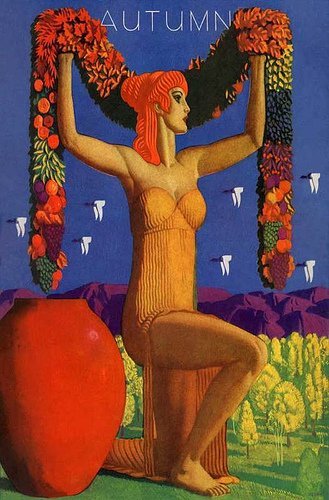
View On WordPress
#Art Deco Society of Los Angeles#Art Deco Society of New York#Art Deco Society of the UK#Art Deco Society of Washington#Art Deco Society of Western Australia#Art for the Millions#Avant-Garde Posters#Chicago Art Deco Society#Chrysler Building#Cocktails in Historic Places#Detroit Area Art Deco Society#Fred Astaire#Ginger Rogers#Metropolitan Museum of Art#New York Adventure Club#Phoenix Art Deco Society#Poster House
0 notes
Text
The Titanic

View On WordPress
#9/11 Memorial & Museum#Area 51#New York City#political thriller#Raven Rock#SOS United States#Suprise Kill Vanish#Titanic#Titanic Historical Society#Titanic The Exhibition
0 notes
Text

A Torah scroll that survived desecration by British troops during the American Revolution is now on display at the New-York Historical Society, part of an exhibit connected to the society’s three-year, $65 million reopening.
The scroll from the Shearith Israel synagogue, the oldest Jewish congregation in the United States and New York’s only Judaic house of worship for nearly a century, still has burn marks on it from the British ransacking of the city in 1776.
In August of that year, shortly after the signing of the Declaration of Independence, George Washington and his troops retreated to Manhattan Island after being routed by the British on Long Island.
Washington wanted desperately to hold onto whatever small scrap of New York he could, but by November his army had been booted from Manhattan. The British would occupy the area for the remainder of the war, according to The Jewish Week.
During the occupation, thousands of rebel sympathizers fled the city as British troops looted and pillaged, setting fire to homes, bridges and even Congregation Shearith Israel, which was built in 1729.
The synagogue had bought two Torah scrolls when it was built, one Sephardic and one Ashkenazi, since the community was split.
And during the Revolution, the British attacked both scrolls, though it is the Ashkenazi one that is now on display, according to The Jewish Week.
“They set one on fire, and they slashed the other with a sword,” said Rabbi Hayyim Angel, the current rabbi at Temple Shearith Israel.
Jewish law requires that desecrated holy texts be buried, but Angel and other scholars speculate that the community realized the historic value of the damaged scrolls and kept them instead, according to the publication.
It’s not clear where the scrolls were kept during the seven years of the British occupation. Most of the Shearith Israel congregants fled the city, since they were rebel sympathizers and some believe they may have taken the scrolls with them.
Another possibility is that the British forces protected them. The British employed Hessian soldiers, troops hired out by German rulers to the British to help fight the war, and at least one of them in the city was Jewish, said Debra Schmidt Bach, a curator at the society.
Whatever the case, the attack on the scrolls was probably not an anti-Semitic attack, according to Bach.
“It was part and parcel of the vandalism that was going on throughout the city,” she said.
Moreover, British commanders harshly punished the two British soldiers who attacked the synagogue. “One was lashed so severely he died from his wounds,” Bach added.
Other items on display during the exhibition include features Sabbath candle holders and a Chanukah menorah by famed Colonial silversmith Myer Myers; two portraits of Jews who fought in the War of 1812; and a book of poems by Emma Lazarus, a congregation member whose poem, “The New Colossus,” adorns the Statue of Liberty.
The exhibition opened Nov. 11 at the New-York Historical Society, and will be on view for about four months. The museum is located at 170 Central Park West.
(Above: The Shearith Israel Torah scroll that was burned by British troops in 1776. Photo by The Jewish Week.)
113 notes
·
View notes
Text













History of Russian Costume
from the Eleventh to the Twentieth Century
catalogue compiled by T.S.Alyoshina, I.L.Vishnevakaya, L.V.Efimova, T.T.Korshunova, V.A.Malm,E.Yu.Moiseenko, M.M.Postnokova-Loseva,E.P.Chernukha
The Metropolitan Museum of Art, New York 1977, 116 pages, 14x21,5cm, ISBN 0-87099-160-4
euro 75,00
email if you want to buy [email protected]
The Glory of Russian Costume exhibition which this publication accompanies was created on the basis of materials drawn from the collections of leading Russian museums: the Pavlovsk Museum; the Arsenal Museum, Leningrad; the State Museums of the Kremlin, Moscow; the State Historical Museum, Moscow; and the State Hermitage Museum, Leningrad. At the time, the exhibition of Russian costume was shown abroad for the first time, but in Russia these items, along with an enormous number of others, are shown in their respective museums for visitors to enjoy. Costume, as part of the material culture of society, reflects the history of the people. In this way, this exhibition as presented to an American audience went far beyond the framework of a narrowly professional one, and is definitely of great interest to the widest circles of the population.
The exhibition acquaints the visitor with the traditional shapes of Russian clothing, as well as with the character of the later all-European type of costume in Russia. The collection includes more than 500 authentic examples of clothing dating from the eleventh to the beginning of the twentieth century. The art of Russian costume is arranged chronologically into three sections: Russian Costume from the Eleventh to the Seventeenth Century, Folk Costume from the Eighteenth to Early Twentieth Century, and Urban Costume from the Eighteenth to the Early Twentieth Century
29/11/24
#Russian Costume#fashion exhibition catalogue#Met New York 977#Collections of russian museums#fashion books#fashionbooksmilano
31 notes
·
View notes
Text
Fraunces Tavern is one of the very few remaining colonial-era buildings in New York, and was the site of several historic moments, including Washington's farewell to his officers in 1783 and the Society of the Cincinnati dinner that Hamilton and Burr attended a week before the duel.
The long room where Washington had his farewell:
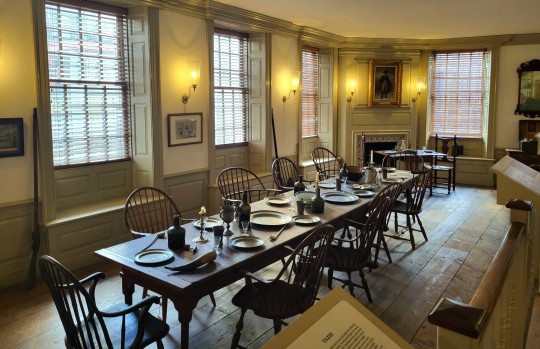
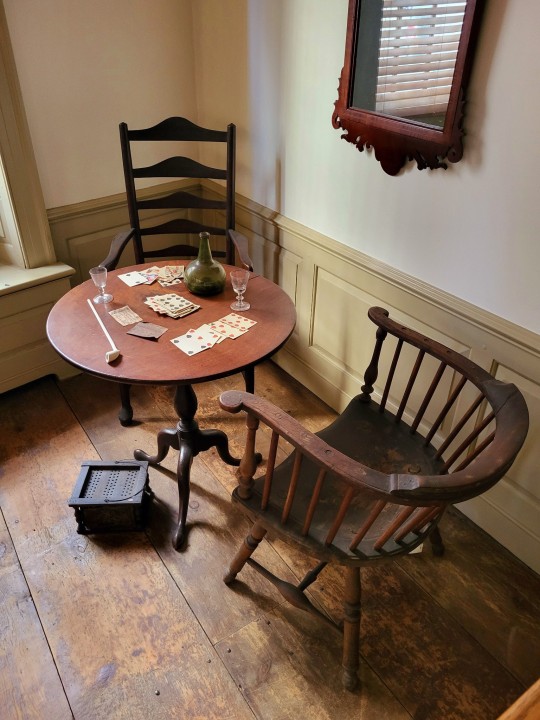
The museum also has letters by Washington and Nathan Hale.
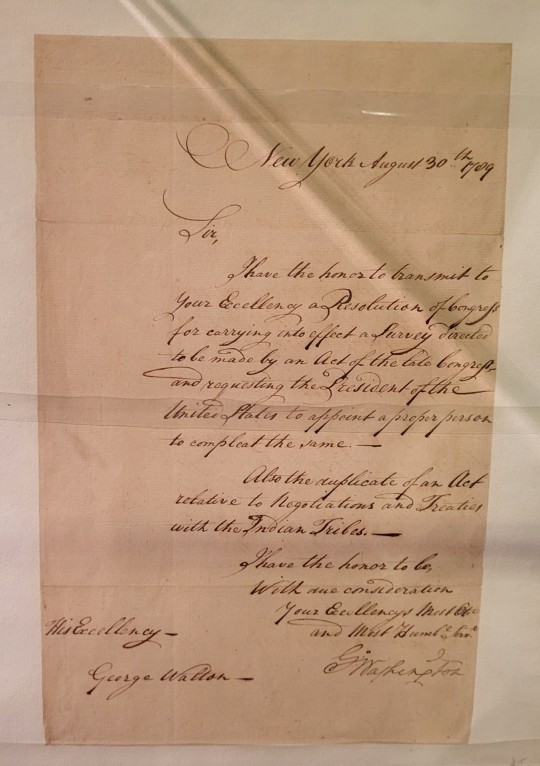
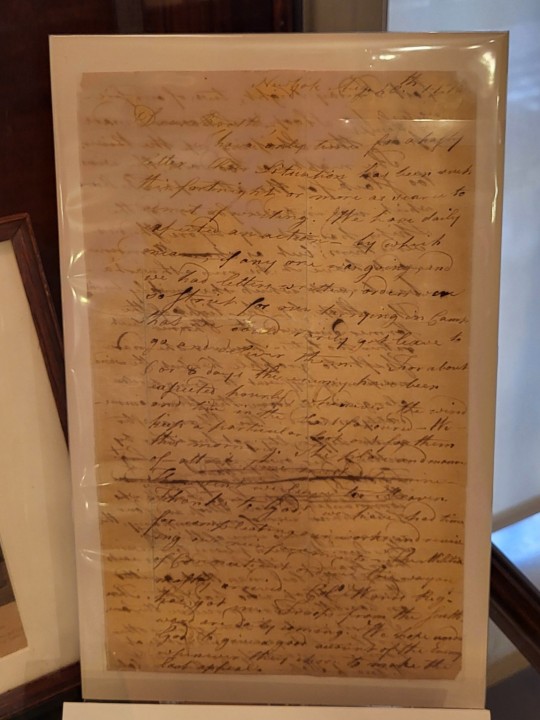
And Ben Tallmadge's memoirs.
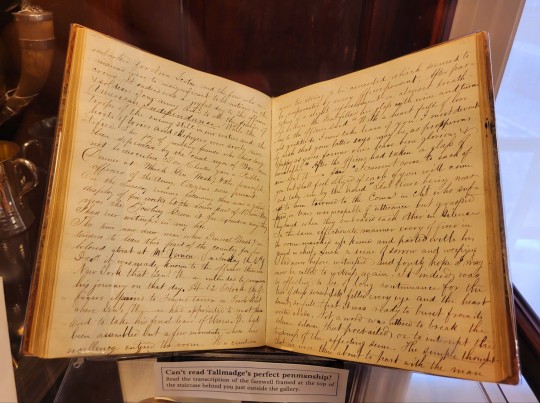
Along with, for some reason, a bit of Washington's hair.
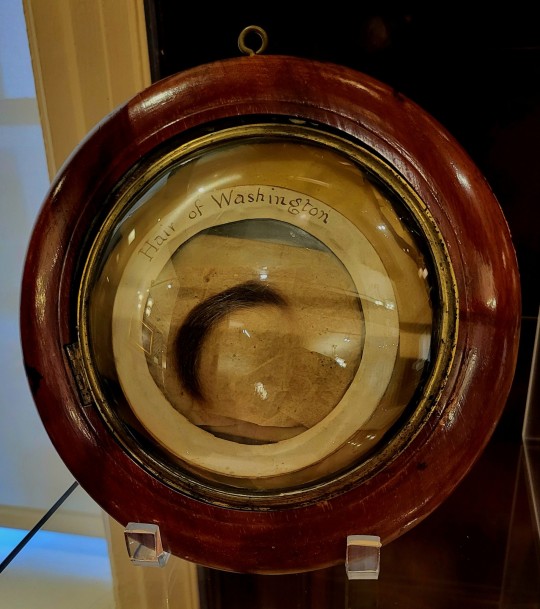
#amrev#fraunces tavern#george washington#alexander hamilton#aaron burr#benjamin tallmadge#nathan hale#18th century history
130 notes
·
View notes
Text

Philosophy and Christian Art
Artist: Daniel Huntington (American, 1816-1906)
Date: 1868
Medium: Oil on canvas
Collection: Los Angeles County Museum of Art, Los Angeles, CA, United States
Description
Although most of Huntington’s long career was taken up in painting more than one thousand portraits, he also painted landscapes and probably thought of himself as a painter of allegories and ideal subjects. His interest in religious and allegorical painting had been kindled by the Raphaelesque Italian and German ideal subjects he had seen in Rome on his first trip to Europe in 1839. By the 1860s his models were the Venetian artists of the High Renaissance, especially Titian (c. 1488-1576), whose example can be seen in the costumes and figure types depicted in Philosophy and Christian Art. The model or the type of the old man also appears in Huntington’s Sowing the Word, 1868 (New-York Historical Society). The influence of the Venetian school can also be seen in the rounder forms and richer palette of his paintings of this period. Even the half length format seems to echo Venetian examples. The model for the painting to which the young lady gestures, however, appears to be The Adoration of the Shepherds, 1650, by José Ribera (1588-1652) in the Louvre, Paris. The painting is conceived as a conversation between embodiments of opposing, but equally worthy points of view. The wisdom of the aged scholar, reading a book by lamplight, is contrasted with the intuitive perceptions of the young woman who examines a work of art by the daylight signified by the window.
#allegory#painting#oil on canvas#philosophy#christian art#artist#phillsopher#open book#artwork#woman#man#young lady#aged scholar#reading#lamplight#symbolism#window#costume#distant landscape#oil painting#daniel huntington#american painter#american art#19th century painting#los angeles county museum
21 notes
·
View notes
Text

The Smithsonian Acquires the Earliest Known Photograph of an American First Lady
The National Portrait Gallery purchased an 1846 daguerreotype of Dolley Madison for $456,000.
Three years before her death in 1849 at age 81, Dolley Madison posed for photographer John Plumbe Jr. at his studio in Washington, D.C. Clad in a crocheted shawl and one of her famous turbans, carefully arranged to cover most of her dark curls, the former first lady met the camera’s gaze with a piercing yet inviting stare.
“She’s got this little hint of a smile,” Emily Bierman, global head of Sotheby’s photography department, tells the New York Times’ Jennifer Schuessler. “You can tell she was a commanding and venerable woman.”
A surviving daguerreotype from this 1846 sitting recently resurfaced after decades in obscurity. Now identified as the earliest known photograph of an American first lady, the portrait went up for auction last week at Sotheby’s, where it fetched more than six times its estimated value of $50,000 to $70,000. The Smithsonian’s National Portrait Gallery paid $456,000 for the daguerreotype, which will reside in the museum’s permanent collection alongside the earliest known photograph of a United States president: an 1843 portrait of John Quincy Adams, acquired at auction for $360,500 in 2017.
Dolley served as first lady from 1809 to 1817. The wife of the U.S.’s fourth president, James Madison, she is regularly lauded for her expert hospitality and bravery during the War of 1812. When the British burned the White House in 1814, Dolley saved a portrait of George Washington from falling into enemy hands, telling servants to break the frame and extract its contents to avoid letting the president’s likeness “be mocked and desecrated,” wrote Smithsonian magazine’s Thomas Fleming in 2010.
As the National Women’s History Museum notes online, Dolley “pretty much created” the role of first lady, “setting the bar upon which all [of her successors] have been judged.” She hosted politicians from across the political spectrum at the White House, encouraging the nation’s leaders to put their differences aside in social settings, and she established the first lady’s unofficial duty as hostess. When Dolley died in 1849, President Zachary Taylor eulogized her as “the first lady of the land for half a century.”

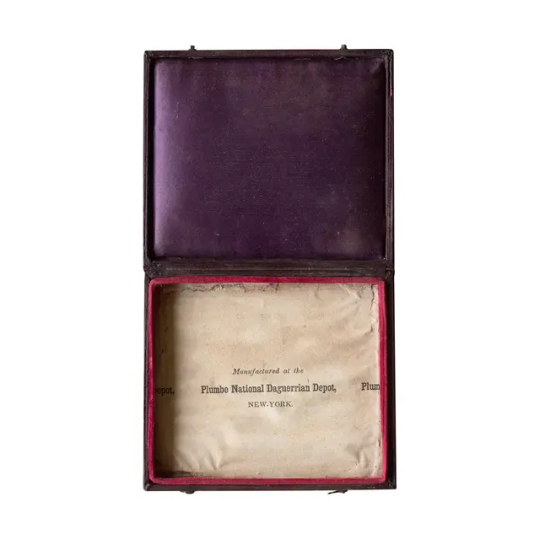
Reflecting on the portrait’s acquisition in a statement, Smithsonian Secretary Lonnie G. Bunch III says, “This artifact will provide the Smithsonian another opportunity to tell a more robust American story and illuminate the vital role women like [Dolley] have played in the nation’s progress.”
According to the Times, the daguerreotype’s anonymous sellers discovered it while cleaning out the basement of a family member who had died. Recognizing the first lady’s face, they sent a scan of the photograph to Sotheby’s, attracting Bierman’s attention despite what she describes as the “fairly terrible” quality of the JPEG file.
The newly auctioned portrait isn’t the only surviving photograph of Dolley. Mathew Brady, the photographer who immortalized such 19th-century Americans as Abraham Lincoln and Ulysses S. Grant, captured Dolley’s likeness in 1848. More than a century later, two daguerreotypes from the sitting surfaced in a leather trunk once owned by Dolley’s niece, Anna Payne Causten. One of the portraits—both of which are now housed at the Greensboro History Museum in North Carolina—depicts Dolley seated next to a standing Causten, while the other shows the first lady sitting alone in a pose reminiscent of the Sotheby’s daguerreotype.

An 1848 daguerreotype of Dolley and her niece, Anna Payne Causten, by Mathew Brady.
A separate daguerreotype held by the Maine Historical Society was previously attributed to Brady but is now believed to date to the same sitting as the Sotheby’s one. The image offers a nearly identical view of Dolley, this time with her hands visible and expression slightly different. As Sotheby’s notes in the lot listing for the newly auctioned portrait, “new research and close examination” suggest Plumbe was the creator of both daguerreotypes.
Several clues link the Sotheby’s portrait to Plumbe, a Welsh-born immigrant who emerged as one of the U.S.’s most prominent 19th-century photographers. Visitor logs kept by Dolley indicate she met with Plumbe on February 22, 1846, and contemporary newspaper reports mention a portrait of the first lady featured in the photographer’s exhibitions that May. Most importantly, the back of the portrait’s case bears a printed message stating, “Manufactured at the Plumbe National Daguerrian Depot, New-York.”
According to the Times’ Annie Aguiar, the 1846 daguerreotype will go on view at the National Portrait Gallery in a 2026 exhibition marking both the 50th anniversary of the museum’s photography collection and the 250th anniversary of the nation’s founding.
By Meilan Solly.
#The Smithsonian Acquires the Earliest Known Photograph of an American First Lady#Dolley Madison#photographer John Plumbe Jr.#daguerreotype#history#history news
26 notes
·
View notes
Photo

Cécile and Marie-Grace were released alongside the best friends line of dolls, and are a pretty transparent gimmick to get people to buy two dolls at once. That being said, I actually kind of love their collection.
Their story is set in New Orleans in 1853, which is a pretty great way to represent the Antebellum South without having a Scarlett O’Hara doll. New Orleans was one of the few places in the south with a robust middle class. Everywhere else had tremendous wealth inequality with absurdly rich plantation-owners, barely surviving poor Whites, and slaves.
Cécile is of the gens de coleur libre, that is, the free people of color, a class of New Orleans citizens born out of the plaçage system in which White men would take women of color as informal second wives. Plaçees held a really interesting position, as they could legally claim inheritance once their patron died, and the children born of plaçage could be named heir of an estate. Plaçees were also allowed to develop assets and run small businesses. All of this created a level of generational wealth that was unique among African-Americans at the time. Today, their descendants are known as Creoles.
As far as Marie-Grace goes, I don’t think she’s Cajun, just French-American. Cajuns are a specific group, the Catholic descendants of the French colonizers of Acadia, now called Nova Scotia, who were forced by the British out of the home. They settled mostly in the fertile Mississippi delta, and maintained a rural, somewhat insular way of life. Marie-Grace is the city-dwelling daughter of a doctor, so probably just the descendant of regular French citizens who settled in New Orleans.
Hair-wise, this is the era when girls tied their hair up with rags at night to have fat sausage curls in the morning. Most photographs and paintings that I’ve seen of Black girls in the era show them with their hair tied up, but there are a few who had curls.
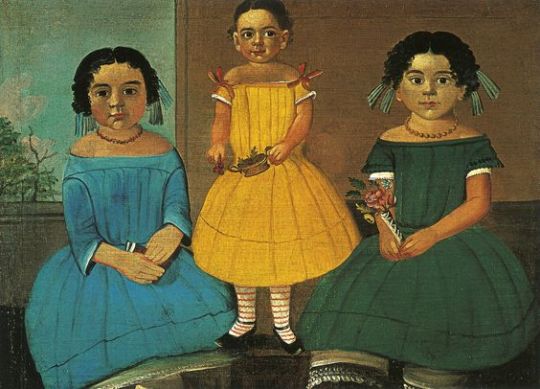

Marie-Grace’s face-framing curls are a little bit more Jan Brady than 1850s, but it’s cute on her, so I’ll give her credit for that. The long hair isn’t inaccurate.
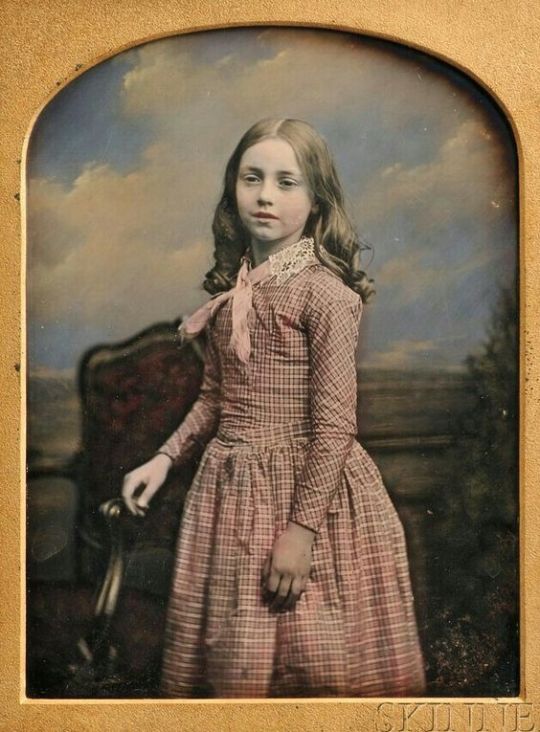
There’s something about Cécile’s dress that keeps saying “wrong” but I can’t quite put my finger on it. A more accurate dress would be more along the lines of something like this:

(The Victoria & Albert Museum)

(The Victoria & Albert Museum)
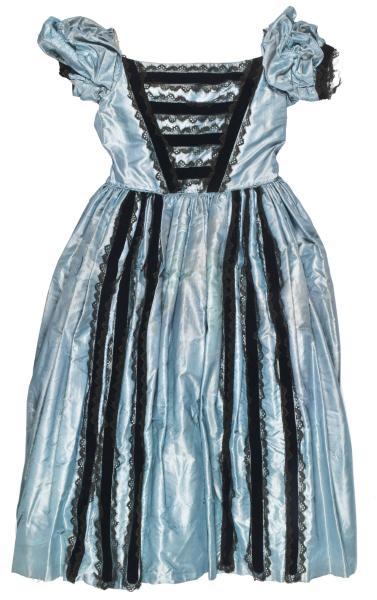
(New York Historical Society)
Marie-Grace’s dress seems to have been inspired by this portrait of Creole children:
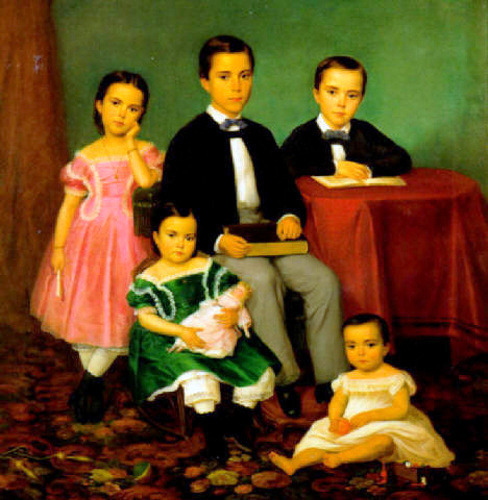
(credit to @in-pleasant-company for finding it)
Cécile’s pillbox hat is a style that was adopted more in the late 1860s and 1870s. A more accurate hat would also have her in a “coal scoop” bonnet.
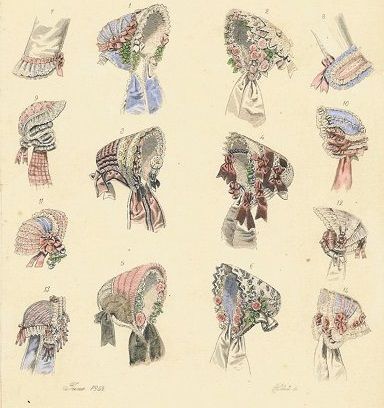
Her gloves, however, are accurate and adorable!
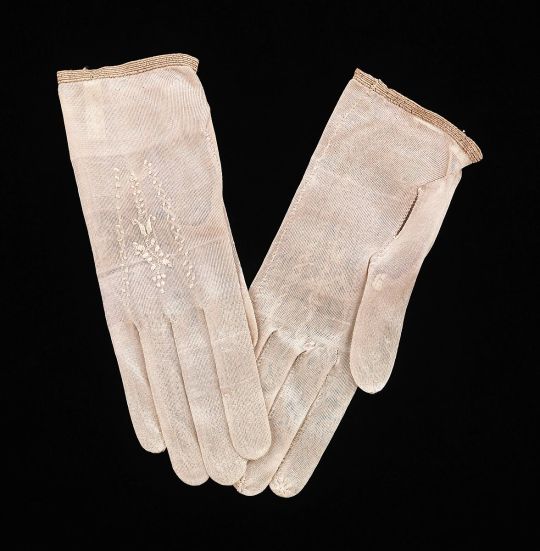
(The Met Museum)
Marie-Grace is wearing a kind of sun hat that was popular for children:

(The Met Museum)
Marie-Grace’s fan looks typical of the French fans that were popular at the time. They were usually painted with pretty pastoral scenes instead of flowers, however, although Chinese fans at the time frequently had floral themes.
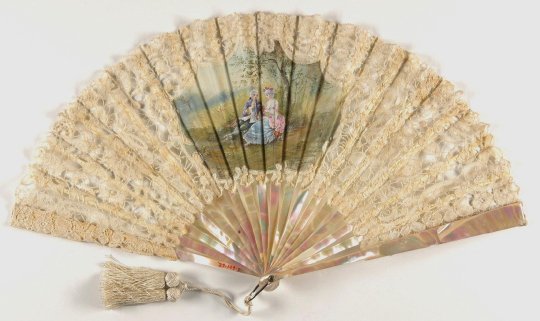
(The Philadelphia Museum of Art)

(The Victoria & Albert Museum)
The shoes are definitely late Victorian rather than 1850s. Fine city ladies in the 1850s would be wearing boots made out of silk with leather soles:

(The Met Museum)
282 notes
·
View notes
Text



New York Historical Society Museum, Gallery of Tiffany Lamps [1/?]
#tiffany lamps#light#these are from a while back but i only just remembered to get my mum to send me the photos lol#ceci says stuff#museums#new york historical society#new york historical society museum#undescribed
9 notes
·
View notes
Text

An image of Roald Amundsen's sloop Gjøa, the first ship to successfully sail the Northwest Passage, framed in wood from the ship's library (New York Historical Society).
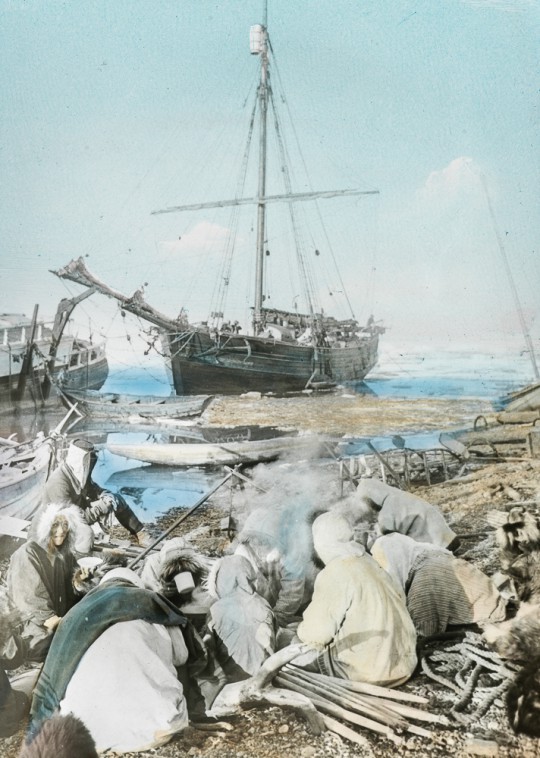
Gjøa at Gjøa Haven, c. 1903-1906 (Fram Museum).
#polar#arctic exploration#northwest passage#roald amundsen#gjøa#gjoa#sloop#1900s#arctic#the sea#polar exploration#nunavut#maritime history
67 notes
·
View notes
Text


On November 8th 2001 Dorothy Dunnett, the cult Scottish novelist, died.
The writer of intricate and meticulously researched historical novels, she attracted a devoted following with her multi-volume sagas. Her novels included the million-word Lymond Chronicles, in six volumes, which covered 15 years in the life of a 16th-century Scottish aristocrat, Francis Crawford of Lymond, she followed that with the eight-part prequel The House of Niccolò.
Aficionados of the Dunnett epics formed their own societies, meet regularly at international conferences, and swap theories about the puzzles and the sub-plots that the author sewed so carefully throughout the developing storylines. They are also a protective bunch which I found out in my last post about the author, being pulled up for a previous post that was slightly wrong!
Dunnet also wrote a novel about the real Macbeth called King Hereafter, and a series of mystery novels centred around Johnson Johnson, a portrait painter and roving agent for British Intelligence, it showed her versatility as a writer.
An only child, Dorothy went to James Gillespie’s High School for girls, where she overlapped with Muriel Spark, and was taught by Miss Kay, the model for Jean Brodie. She discovered a talent for painting, and contemplated a career as an artist, but war broke out, and at the age of 18 she went to work as a, typist.
Only after the death of her father, which caused her great misery, did her husband suggest that she take up writing. She began researching the childhood of Mary Queen of Scots, and invented a character, Francis Crawford of Lymond, a dashing Scots mercenary, who travelled widely, visiting the French and English courts, caught up in intrigues across 16th- century Europe.
The Game of Kings, her first novel, was rejected by English publishers because it was considered too long, but was spotted in New York by Lois Cole, who had published Gone With the Wind. It came out in 1961 and was an instant best-seller, marking the beginning of a remarkable fictional journey, which took Dunnett round the world in pursuit of historical detail.
Dunnett, tempted her fans with buried clues and red herrings that keep them reading and rereading the books, indeed I had a comment on a post about her a few years ag, that on rereading they would often find certain parts that they somehow missed first time around.
Although she led a busy life, her favourite relaxation was sitting in their Morningside home, with a glass of malt whisky, discussing the day’s events, sounds good to me!
As with many of our writers, Dorothy Dunnett is remembered in Makars Court, the stone bears her name, her coat of arms, and a brief quote from one of her books “Where are the links of the chain … joining us to the past”.
Dorothy Dunnett has a slab in Makar's Court beside the writers museum, it reads;
Where are the links of the chain… joining us to the past? and is from her novel, Checkmate, part of the Lymond Chronicles
Dorothy Dunnett died on this day in 2001 after a short illness; she was 78 years old.
11 notes
·
View notes
Text
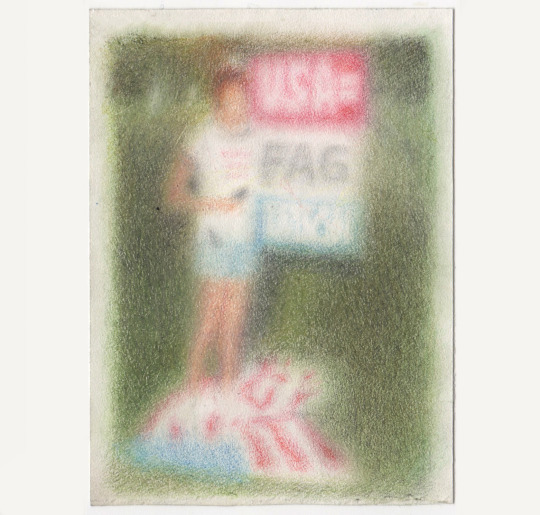
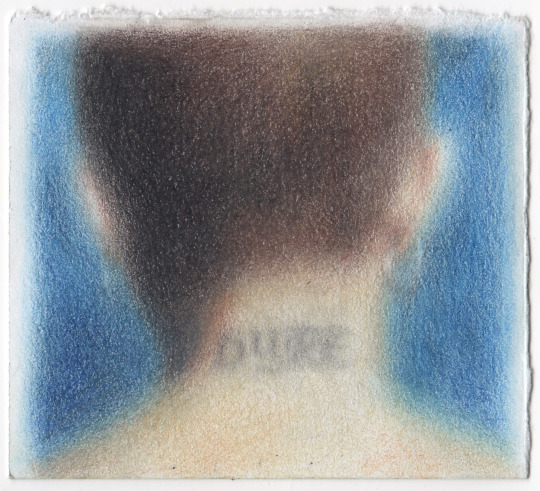
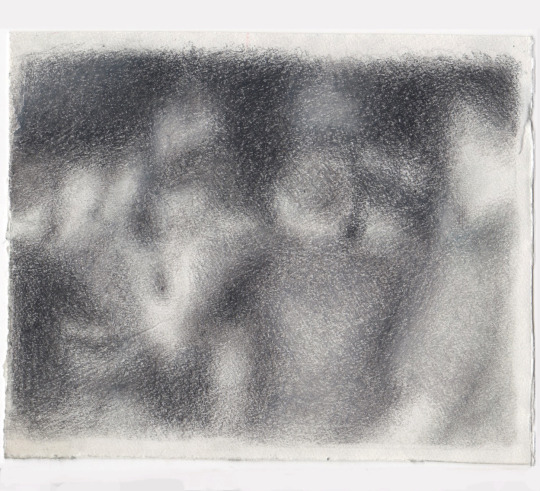
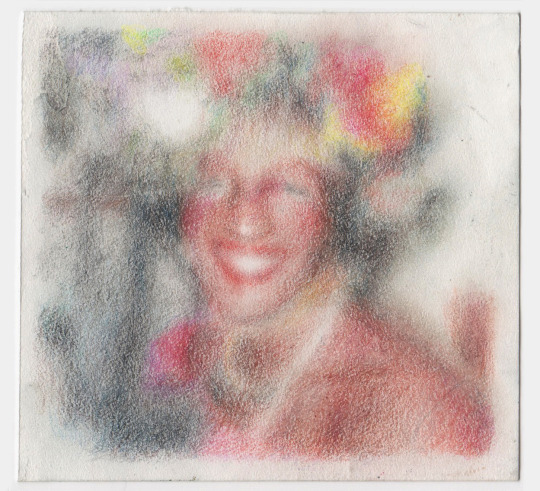

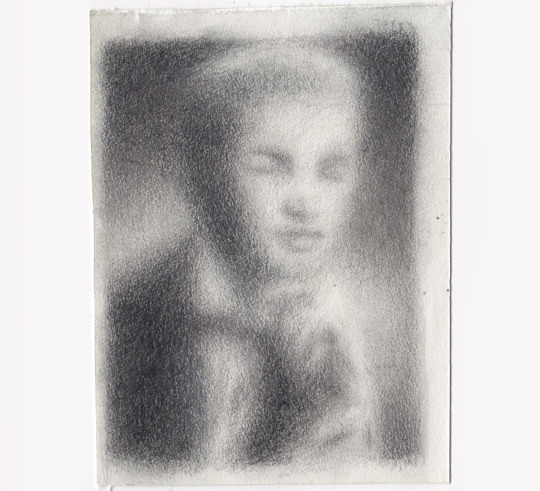
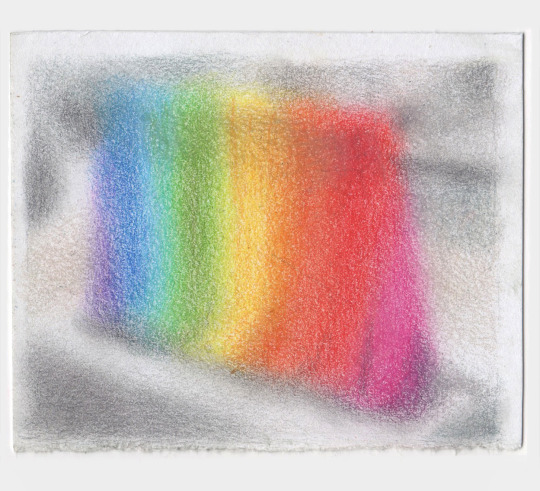
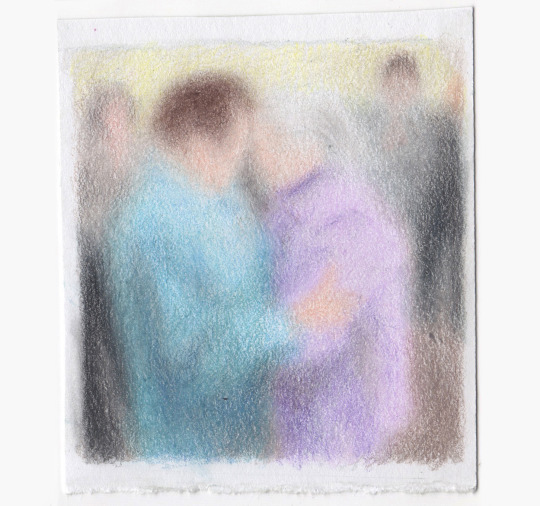
1. Westboro Baptist Church girl standing on the flag, photographer unknown
2. "Dyke" 1993, Catherine Opie
3. Police conduct a raid at the Stonewall Inn in New York on June 28, 1969, Getty Images
4. Portrait of Marsha P. Johnson, photographer unknown
5. IF I DIE OF AIDS-FORGET BURIAL-JUST DROP MY BODY ON THE STEPS OF THE F.D.A 1988, David Wojnarowicz
6. Stormé DeLarverie, The Jewel Box Revue
7. Original pride flag by Gilbert Baker on display at the GLBT Historical Society Museum in San Francisco
8. The first legal same-sex marriage ceremony in the USA, February 12, 2004, between Del Martin and Phyllis Lyon, Liz Mangelsdorf/The Chronicle
Images created using colored pencils and sticker paper, all 3x3" or smaller.
86 notes
·
View notes
Note
What's the itinerary? 👀
Hi, Anon! Happy to share.
My dream American Revolution trip itinerary, just including my must-sees, and a rough idea of transportation (still working on food stops and slipping in other points of interest):
Day 1:
Early morning flight to Boston, MA
Stay in Boston for 3 nights, 4 days
Rental car for Day 2 and 3
Boston Massacre Site
Boston Tea Party Ships & Museum
Bunker Hill Museum and Monument
Old North Church & Historic Site
Day 2:
Paul Revere House
Lexington Battle Green Tour, Lexington MA
Drive from Boston
Old North Bridge, Concord MA
Drive from Lexington
Day 3:
Adams National Historic Park, Quincy MA
Drive from Boston
General Nathaniel Greene Homestead, Coventry RI
Drive from Adams NHP
Day 4:
Early morning train/bus to Albany, NY
Stay in Albany 2 nights, 3 days
Rental car for Day 4 and 5
Saratoga National Historical Park, Stillwater NY
Drive from Albany
Fort Ticonderoga, Ticonderoga NY
Drive from Saratoga NHP
Day 5:
Schuyler Mansion tour
Washington’s Headquarters State Historic Site, Newbrugh NY
Drive from Albany
John Jay Homestead, Katonah NY
Drive from Washington Headquarters Newbrugh
Day 6:
Early morning train from Albany to New York City, NY
Stay in New York City for 4 nights, 5 days
Hamilton Grange National Memorial
Morris-Jumel Mansion
Day 7:
City Hall Park
Federal Hall
Fraunces Tavern Museum
Trinity Church & Cemetary
Day 8:
Museum of the City of New York
The Metropolitan Museum of Art
Day 9:
Van Cortlandt House Museum
Central Park
New York Historical Society Museum & Library
Weehawken Dueling Grounds/Hamilton Park, Weehawken, NJ
Take ferry to and from
Day 10:
Train/bus to Princeton, NJ
Stay in Princeton 2 nights, 3 days
Rental car for Day 11
Princeton Battlefield State Park
Day 11:
Monmouth Battlefield State Park, Manalapan, NJ
Drive from Princeton
Morristown National Historical Park, Morristown NJ (Includes: Ford Mansion/Washington’s Headquarters, Schuyler-Hamilton House, Jockey Hollow)
Drive from Monmouth Battlefield Park
Day 12:
Early train/bus to Trenton, NJ
Old Barracks Museum
Washington Crossing Park, Washington Crossing, PA
Train/bus from Trenton
Train/Bus from Washington Crossing to Philadelphia PA
Stay in Philadelphia 3 nights, 4 days
Rental car for Day 15 and 16
Day 13:
Independence Hall
Liberty Bell Center
First Bank of the United States
Carpenter’s Hall
Day 14:
Museum of the American Revolution
Elfreth’s Alley Museum
Day 15:
Valley Forge National Historical Park
Drive from Philadelphia
Moland House (Washington Headquarters), Warwick Township PA
Drive from Valley Forge NHP
Peter Wentz Farmstead (Washington Headquarters), Lansdale PA
Drive from Moland House
Day 16:
Cliveden of the National Trust (Chew House)
Drive from Philadelphia
Brandywine Battlefield (park), Chadds Ford PA
Drive from Cliveden
Afternoon or evening train from Philadelphia to Alexandria, VA
Stay in Alexandria for 2 nights, 3 days
Rental car for Day 18
Day 17:
George Washington’s Mount Vernon
Train/bus from Alexandria, VA
National Archives Museum, Washington DC
Train/bus from Alexandria, VA
Day 18:
James Madison’s Montpelier, Montpelier Station, VA
Drive from Alexandria, VA
Evening train from Alexandria to Williamsburg, VA
Stay in Williamsburg 2 nights
Day 19:
Colonial Williamsburg
Day 20:
Yorktown Battlefield
American Revolution Museum at Yorktown
Train/bus/taxi from Williamsburg
Day 21:
Fly from Williamsburg to Charleston, SC
Stay in Charleston for 4 nights, 5 days
Rental car for Days 22-24
South Carolina Historical Society Museum
Day 22:
Savannah History Museum, Savannah GA
Battlefield Park Heritage Center, Savannah GA
Drive from Charleston
Day 23:
Cowpens National Battlefield, Cowpens SC
Drive from Charleston
Eutaw Springs Battlefield Park, Eutawville SC
Drive from Cowpens
Day 24:
Magnolia Plantation and Gardens
Mempkin Abbey (site of Laurens family graves)
Day 25:
Fly home from Charleston SC
#my real challenge is finding someone to go with me#fun part about being visually impaired is you can’t legally drive#amrev#trips#road trip#the american revolution#american revolutionary war#new england#dream travel#traveling#18th century history
10 notes
·
View notes